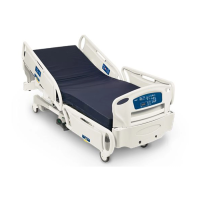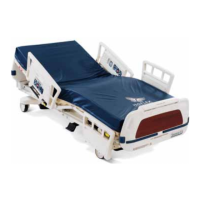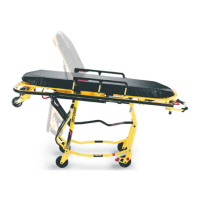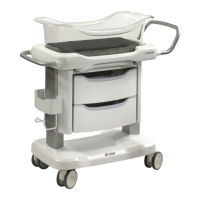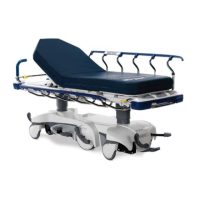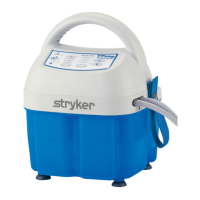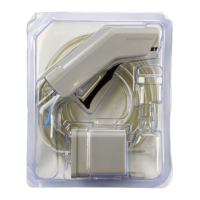Return To Table of Contents
46 2030-809-002 REV D www.stryker.com
POWER AND SENSOR COIL CORD REPLACEMENT
Tools Required:
• #2 Phillips Screwdriver
• Side Cutters
• 5/16” Socket Wrench
• Bungee Cord (or equivalent)
• 5/16” Nut Driver
• Floor Jack
• 2 x 4 (or equivalent)
Procedure:
Note
If you need more space to work under the base frame, place a 2 x 4 across the base frame rails and use a floor jack
to raise the base frame off the floor.
1. Unplug the bed power cord from the wall socket.
2. Using a 5/16” socket wrench, remove the five bolts holding the lower lift cover to the base and remove the cover.
3. Using a #2 Phillips screwdriver, remove the three screws holding the upper lift cover to the base. If you want, hold
the covers out of the way by using bungee cords (or the equivalent) to secure them to the litter top.
4. Using side cutters, cut the cable ties holding the power and sensor coil cords to the base. Remove the ground wire
coming from the sensor cord that is attached to the base (note the star washer arrangement).
5. Disconnect the cables going to the motor and the lift potentiometer (at the head end, the sensor cord is also
attached to the brake switch sensor).
6. Pull both cords up through the frame of the bed and the lift housing.
7. Using a 5/16” socket wrench, remove the two screws (A) holding the cable clamps to the top of the lift housing.
8. Using a 5/16” socket wrench, remove the two screws (B) securing the cable clamps to the underside of the header
crossbar assembly.
9. Pull both coil cords up through the header crossbar assembly.
10. Disconnect the power and sensor coil cords from the connectors.
11. The cords should now be completely removed from the bed. Reverse the above steps to install the new power and
sensor cords.
CAUTION
When replacing the power and sensor coil cords, secure the cable clamps to the cords at the first coil both on the top
and on the bottom to ensure there is not too much slack in the cords between the top of the lift housing assembly and
the bottom of the header crossbar. Be sure the clamps are fastened at exactly the correct angle, as shown by the arrows
in the illustration. Arrange the cords exactly as shown in the illustration (left in front of right). If this is not done correctly,
damage to the cords will result.
Service Information

